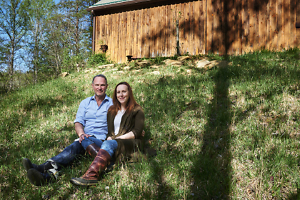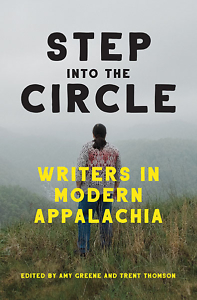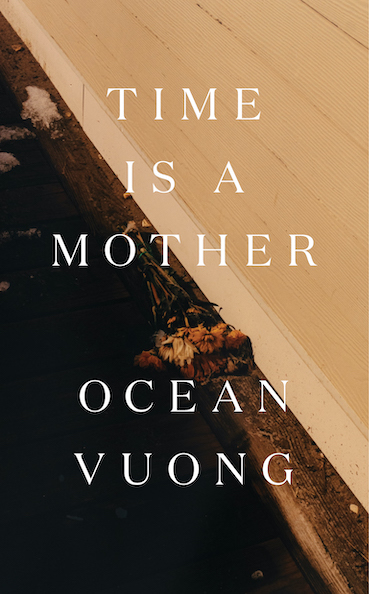Hardship as Possibility
Contemporary Appalachian writers profile one another in Step into the Circle
In “A Vision,” the poem by revered writer and activist Wendell Berry that graces the opening page of Step into the Circle: Writers in Modern Appalachia, Berry proposes that “If we have the wisdom to survive, / to stand like slow-growing trees / on a ruined place, renewing, enriching it,” then “the abundance of this place” will provide a rich source for hope. But Berry’s vision offers no miraculous deliverance. “Its hardship is its possibility.”

With Step into the Circle, editors Amy Greene and Trent Thomson present their own nuanced vision, bringing together Appalachian writers and photographers to profile some of the region’s most beloved literary forces, including Berry, Silas House, Crystal Wilkinson, Ron Rash, and Lee Smith. From these profiles, a vibrant, socially engaged cohort emerges, dedicated to the stories of their homeland — stories that honor the past and challenge the future.
Generosity of spirit permeates this book, owing to the deep respect these profilers show for their subjects. Most of the essays portray fond friendship between two writers, underpinned by mutual, complex respect for mountain landscapes and communities. Novelist Silas House describes Berry, a fellow Kentuckian, with reverence and affection, recounting Berry’s longtime devotion to environmental activism via his own memories of a sit-in at the Kentucky governor’s office.
In turn, acclaimed East Tennessee novelist Amy Greene gives a loving picture of her kinship with House, couching his own activism in personal terms that dovetail with her admiration for his writing. Eastern Cherokee writer Annette Saunuooke Clapsaddle details her lifelong impressions of Marie Junaluska, whose championing of the Cherokee language as a translator and educator pushed her into tribal leadership.
Other essays depict the profiler’s eagerness to learn what influences and communities fuel the work of someone they admire but don’t know. Karen McElmurray sits down with Crystal Wilkinson, seeking to make a connection with her that may illuminate Wilkinson’s spellbinding fiction. East Tennessean Denton Loving sets out to discover the motivations behind visual artworks created by inventive fellow poet Frank X. Walker.
 Memorable photographs appear throughout the book, contextualizing and deepening the depiction of each writer. Shawn Poynter captures a lush vision of Greene and Thomson’s rural refuge in Bulls Gap, Tennessee — a property they call Bloodroot Mountain, home to an arts organization of the same name. C. Williams’ portraits of House make a modern, emotional impression. Will Warasila’s portraits of Junaluska are even more striking than his landscape shots, which grace a number of the book’s overleaves. Mallory Cash’s elegant shots of Ron Rash and Lee Smith give an inviting glimpse into their everyday worlds.
Memorable photographs appear throughout the book, contextualizing and deepening the depiction of each writer. Shawn Poynter captures a lush vision of Greene and Thomson’s rural refuge in Bulls Gap, Tennessee — a property they call Bloodroot Mountain, home to an arts organization of the same name. C. Williams’ portraits of House make a modern, emotional impression. Will Warasila’s portraits of Junaluska are even more striking than his landscape shots, which grace a number of the book’s overleaves. Mallory Cash’s elegant shots of Ron Rash and Lee Smith give an inviting glimpse into their everyday worlds.
The book’s final profile is also its most engrossing. Kentuckian Jason Kyle Howard writes an impassioned love letter to Virginia-born legend Lee Smith. He frames his discussion of her work with a mad dash across D.C. he once made, racing to find a studio where Smith was recording a live radio interview. Smith’s voice is like a homing beacon for Howard: “Lee’s voice was one to be trusted, one by which I could set my course.”
Howard lauds Smith’s complex protagonists as “seekers,” characters “who have been damaged by Appalachia as much as they have been helped.” His insight pinpoints the true heart of this collection: “Smith’s Appalachia is a complex, complicated place, one that is neither romantic nor debased, but which occupies a messy, authentic middle ground.”
What shines the brightest in Step into the Circle is the commitment these writers have made to maintain honorable relationships to their homeland. In ways that resonate as deeply in their personal convictions (manifested in community service and activism) as in their creative work, these writers understand that such commitment demands as much challenge and questioning as it does praise and celebration.
Wiley Cash distills this point when describing his North Carolinian colleague, Ron Rash. “His literary mining of Appalachia is regenerative and restorative,” Cash writes. “It holds the mirror of the past up to the present moment,” bearing witness to the region’s hardships and its possibilities.
[This article originally appeared on December 4, 2019.]

Emily Choate holds an M.F.A. from Sarah Lawrence College and is the fiction editor of Peauxdunque Review. Her fiction and nonfiction have appeared in Shenandoah, The Florida Review, Tupelo Quarterly, Yemassee, Late Night Library, and elsewhere. She lives near Nashville, where she’s working on a novel.


